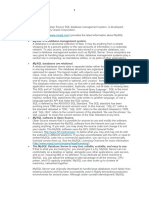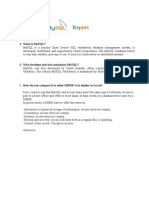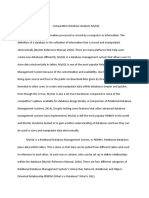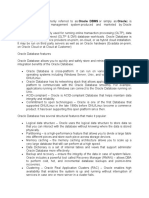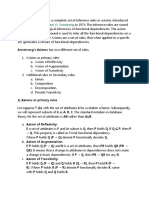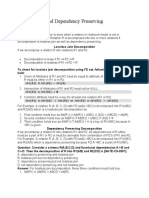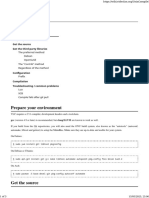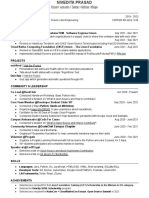0% found this document useful (0 votes)
147 views3 pagesMySQL: Essential Guide for Developers
MySQL is an open-source relational database management system (RDBMS) that is very popular for both small and large applications. It is free, fast, reliable, scalable, and easy to use. Many large websites like Facebook, Twitter, YouTube, and Wikipedia use MySQL. It works with other programs like PHP to enable database-driven websites and web applications. MySQL can be used to store, manipulate, and retrieve data from databases using SQL queries. It is cross-platform, compliant with ANSI SQL standards, and developed by Oracle Corporation.
Uploaded by
Vipul kumar JhaCopyright
© © All Rights Reserved
We take content rights seriously. If you suspect this is your content, claim it here.
Available Formats
Download as DOCX, PDF, TXT or read online on Scribd
0% found this document useful (0 votes)
147 views3 pagesMySQL: Essential Guide for Developers
MySQL is an open-source relational database management system (RDBMS) that is very popular for both small and large applications. It is free, fast, reliable, scalable, and easy to use. Many large websites like Facebook, Twitter, YouTube, and Wikipedia use MySQL. It works with other programs like PHP to enable database-driven websites and web applications. MySQL can be used to store, manipulate, and retrieve data from databases using SQL queries. It is cross-platform, compliant with ANSI SQL standards, and developed by Oracle Corporation.
Uploaded by
Vipul kumar JhaCopyright
© © All Rights Reserved
We take content rights seriously. If you suspect this is your content, claim it here.
Available Formats
Download as DOCX, PDF, TXT or read online on Scribd
/ 3











